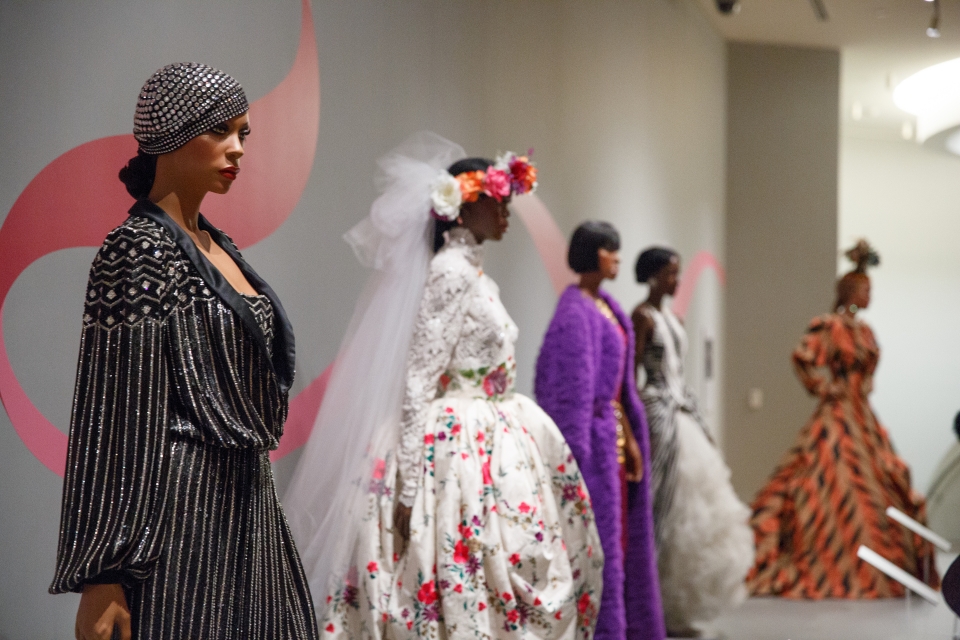The George Washington University Museum and The Textile Museum’s exhibition, “Inspiring Beauty: 50 Years of Ebony Fashion Fair,” features 40 stunning ensembles that tell the story of one of the most influential fashion shows in American history. In a short video released by the museum and the university last month, former Ebony Fashion Fair models, commentators and attendees reveal even more details about the fair’s legacy.
Eunice and John H. Johnson, the founders of Jet and Ebony magazines, launched the Ebony Fashion Fair in 1958. For 50 years, the annual fair traveled around the country and brought couture fashions to African-American communities for the first time. When the show came to Washington, D.C., it would sell out.
“It was a chance—an opportunity of a lifetime—to see these fashions up-close,” fashion consultant Shayla Simpson, a former Ebony Fashion Fair model, commentator and buyer, says in the video.
Using their influence, the Johnsons purchased pieces from the world’s most renowned fashion houses, including Valentino, Yves Saint Laurent and Givenchy, and hired black models to show off the designs. The fair marked the first time many people had seen haute couture on black skin, which influenced other parts of the fashion industry. Ms. Johnson told the New York Times that she had helped convince Valentino to use black models in his 1960 shows.
“Mrs. Johnson broke boundaries and barriers. She was in Europe shopping for these shows at a time when black women could only dream,” former Ebony Fashion Fair model Nia Spencer said.
The museum has planned several events around “Inspiring Beauty” this month. On May 18, Ms. Simpson will share more of her experiences modeling at the fair and traveling to couture houses with Eunice Johnson. On May 24, Diana Baird N’Diaye, curator and cultural heritage specialist at the Smithsonian Center for Folklife and Cultural Heritage, will discuss African-American community style and how the fair impacted black communities. See more events at museum.gwu.edu/exhibition-programs.
“Inspiring Beauty” is on display through July 24.


